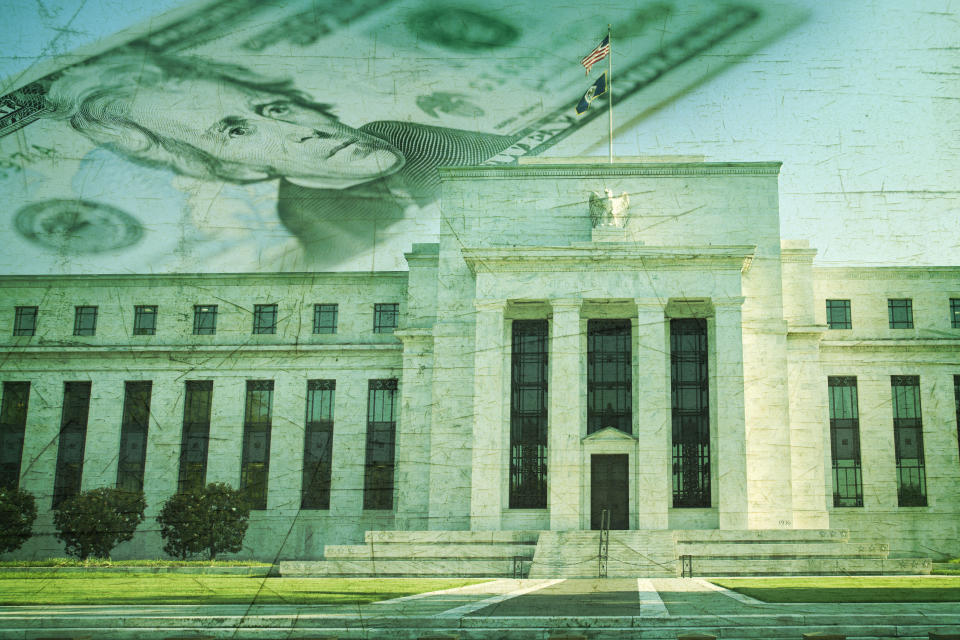Federal Reserve just saved the stock market from the worst of the coronavirus pandemic —it may be time to invest again
Similar to the case during the depths of the Great Recession, the Federal Reserve has probably just saved the stock market from the very worst outcome at the hands of the coronavirus pandemic.
What is that most undesirable outcome being debated by Wall Street strategists for weeks now? A re-test of the March 23 lows on the S&P 500, and perhaps another 20% downside from that point. But now, that may be off the table.
The Federal Reserve on Thursday unveiled plans to provide $2.3 trillion in loans to support households and local businesses. Of interest in the firing of this second Fed bazooka (the first being moving to zero interest rates a few weeks ago), is that the monetary policy body will buy up to $500 million of short-term debt from U.S. states, U.S. counties with a population of at least 2 million residents, and U.S. cities with a population of at least 1 million residents.
Moreover, the Fed will expand the scope of its Term Asset-Backed Securities Loan Facility (TALF) program to include triple-A rated tranches of both outstanding commercial mortgage-backed securities and newly issued collateralized loan obligations.
Overall, these are truly unprecedented actions by the Fed designed to shore up confidence in asset markets — but also the path of the real U.S. economy post-coronavirus peak — as the disease wages a war against civilization. The efforts by the Fed today should make the horrendous economic data this month and into May, amid the closure of the U.S. economy, a bit more digestible for investors. Even in the face of outright ugly data, knowing the Fed is there to provide a full backstop of support for many affected parties should be comforting to the Street.
To that end, markets trading higher in the wake of the Fed’s decision underscore the point.
Indeed, it removes the chances of a full on liquidity crisis in markets, which a range of asset classes started to price in back in late March and were becoming worried about again in the early goings of April.
Now could be a decent time to buy stocks with the Fed flexing its muscles, strategists say.

“What we have learned is that historically, when the Fed is supportive — particularly when we see the kind of massive asset purchases that we saw during the global financial crisis — that caused support and actually caused stocks to rally. We can hope to expect a somewhat similar scenario,” Invesco chief global markets strategist Kristina Hooper said on Yahoo Finance’s The First Trade.
Added Hooper, “I would discourage any kind of deviation from long-term asset allocations. But for tactile allocations, this could be a time to begin buying.”
“I have to say, I’ve done a 180-degree pivot — going from bearish to bullish on credit markets. I would certainly give the Fed an ‘A’ in their communication here. I think backstopping credit is incredibly important to injecting liquidity in credit markets. Coming out of a recession, credit snaps back first. We are explicitly backstopped by the government at this point,” opines Diamond Hill Capital Management portfolio strategist John McClain.
Ball is in your court for stimulus plan number four Congress — the Fed has done its part and the market likes it.
Brian Sozzi is an editor-at-large and co-anchor of The First Trade at Yahoo Finance. Follow Sozzi on Twitter @BrianSozzi and on LinkedIn.
Read the latest financial and business news from Yahoo Finance
Levi's reports solid quarterly earnings, CEO says jeans maker will come out of coronavirus stronger
Yum! Brands CEO on how his 50,000 restaurants are doing amidst the coronavirus pandemic
Grubhub founder: our sign-ups are surging during the coronavirus
HP CEO: here’s how we are helping coronavirus relief efforts
Follow Yahoo Finance on Twitter, Facebook, Instagram, Flipboard, SmartNews, LinkedIn, YouTube, and reddit.

 Yahoo Finance
Yahoo Finance 